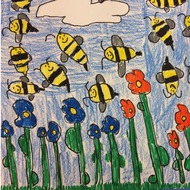
(View Complete Item Description)
Despite being often feared, spiders are mysterious and intriguing, offering a useful foundation for the effective teaching and learning of scientific concepts and processes. In order to provide an entryway for teachers and students—as well as scientists themselves—into the biology of spiders, we compiled a list of 99 record breaking achievements by spiders (the “Spider World Records”).
We chose a world-record style format, as this is known to be an effective way to intrigue readers of all ages. We highlighted, for example, the largest and smallest spiders, the largest prey eaten, the fastest runners, the highest fliers, the species with the longest sperm, the most venomous species, and many more. We hope that our compilation will inspire science educators to embrace the biology of spiders as a resource that engages students in science learning.
By making these achievements accessible to non-arachnologists and arachnologists alike, we suggest that they could be used: (i) by educators to draw in students for science education, (ii) to highlight gaps in current organismal knowledge, and (iii) to suggest novel avenues for future research efforts. Our contribution is not meant to be comprehensive, but aims to raise public awareness on spiders, while also providing an initial database of their record breaking achievements.
Material Type:
Primary Source
Authors:
Eileen Hebets,
Marco Isaia,
Peter Michalik,
Stefano Mammola




















